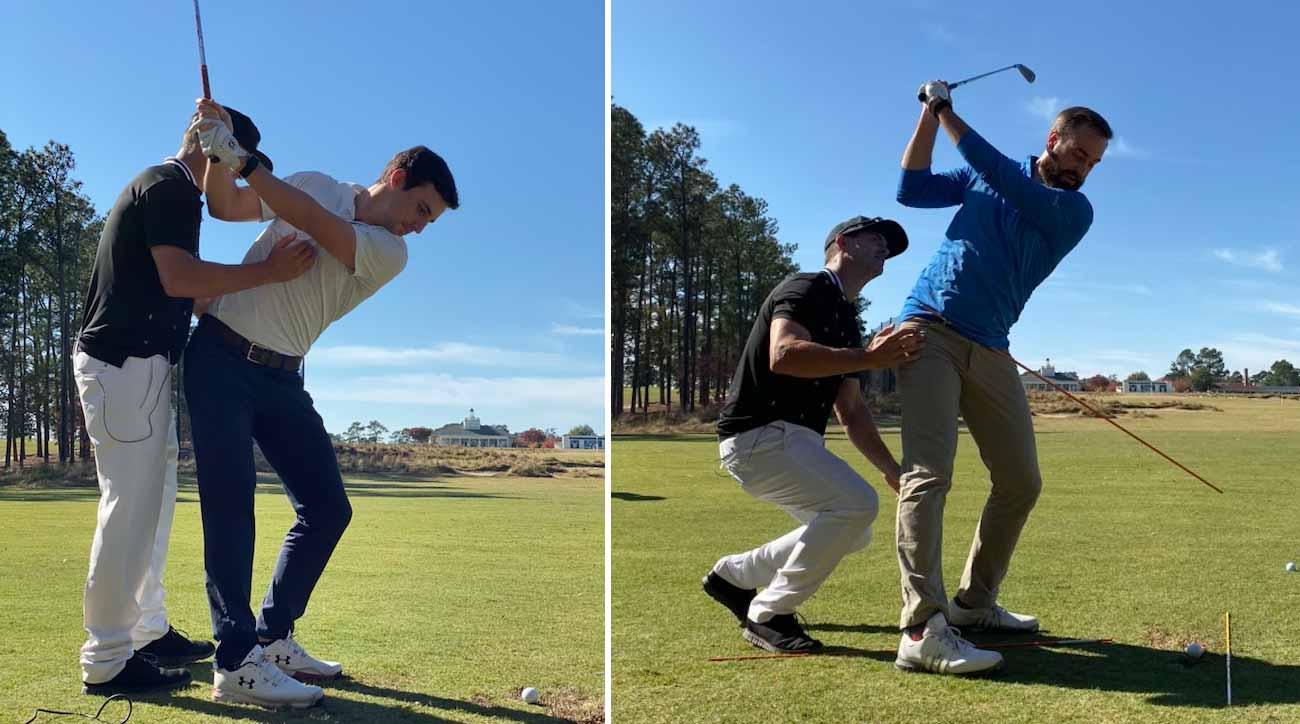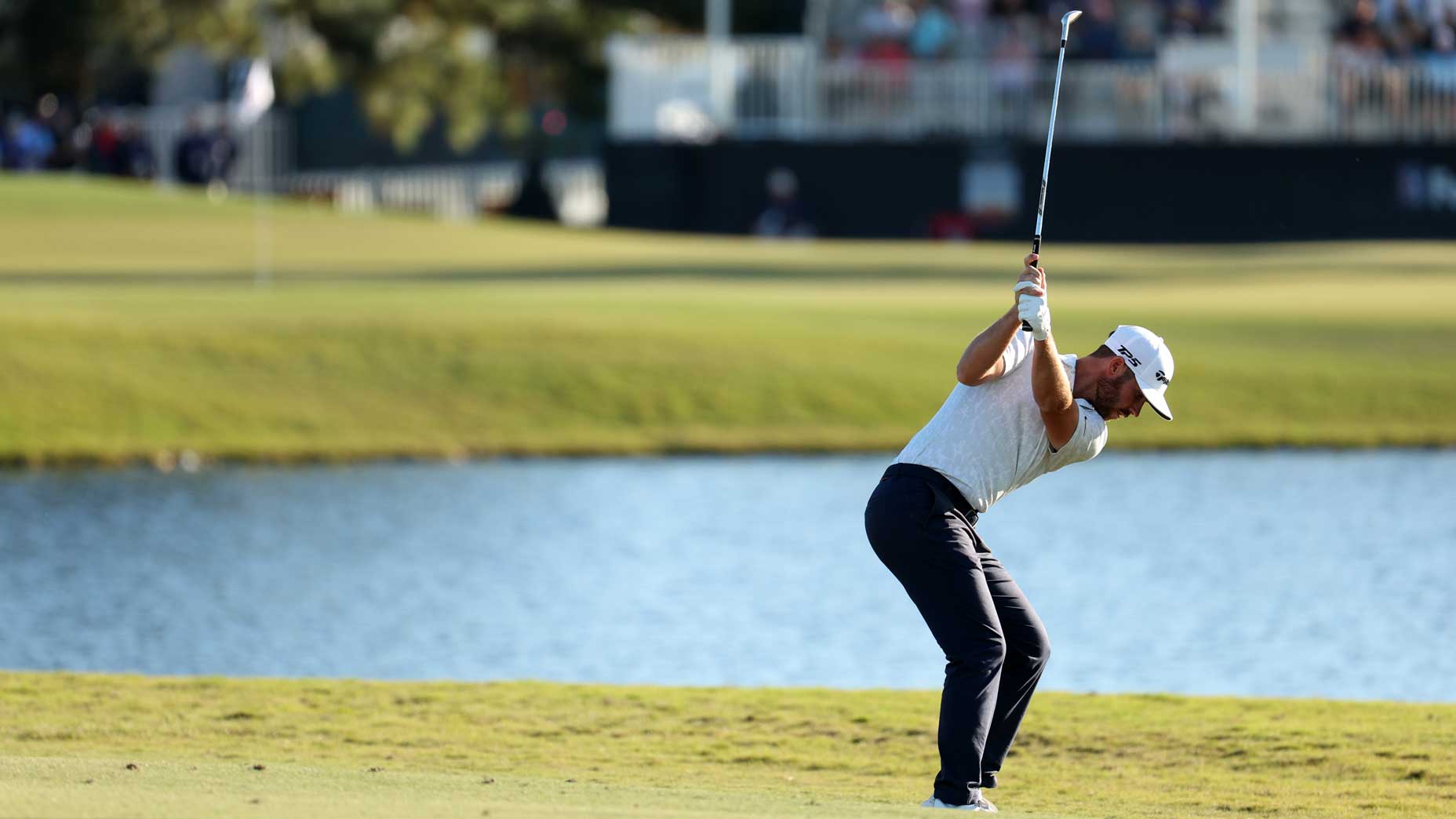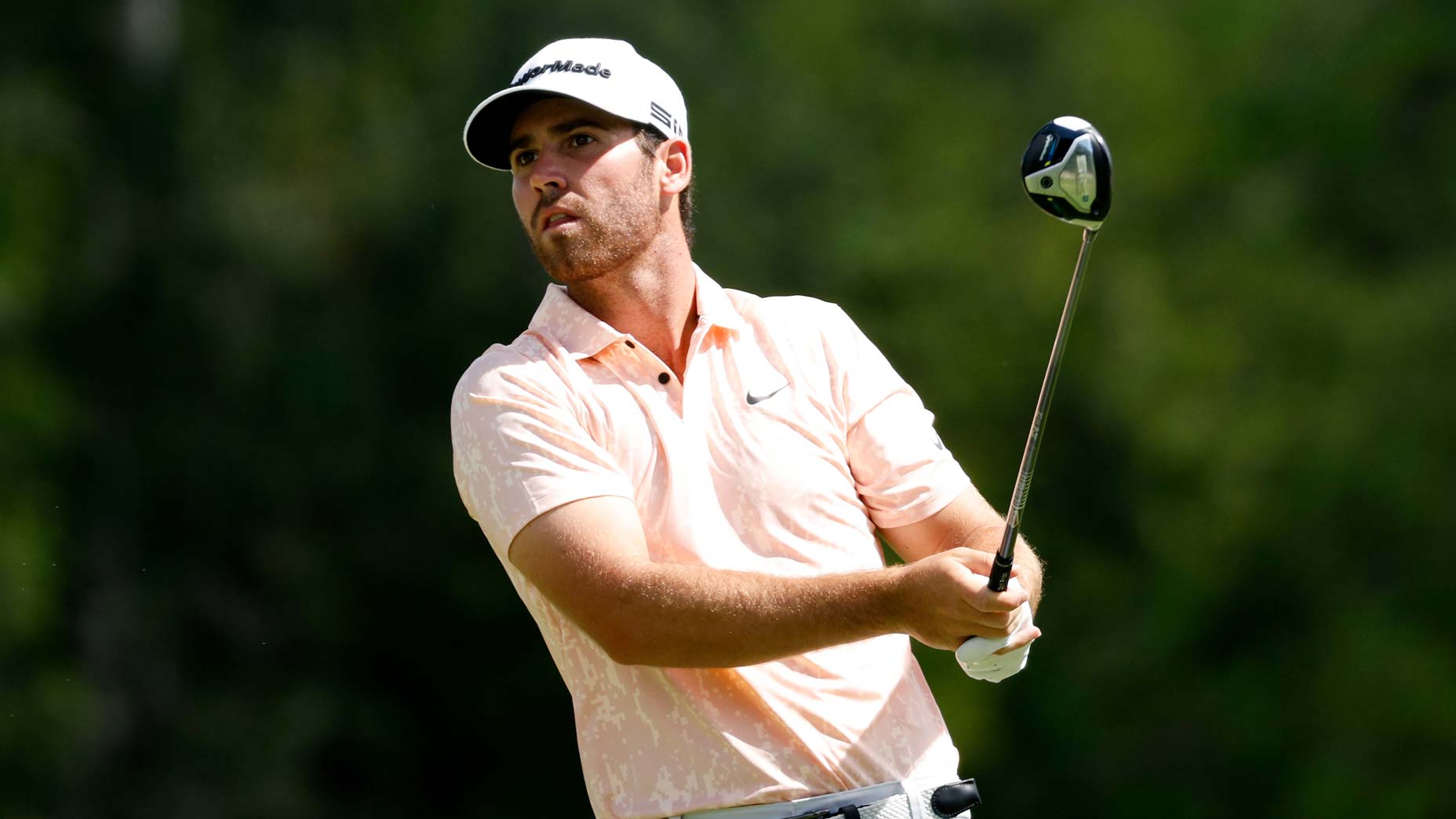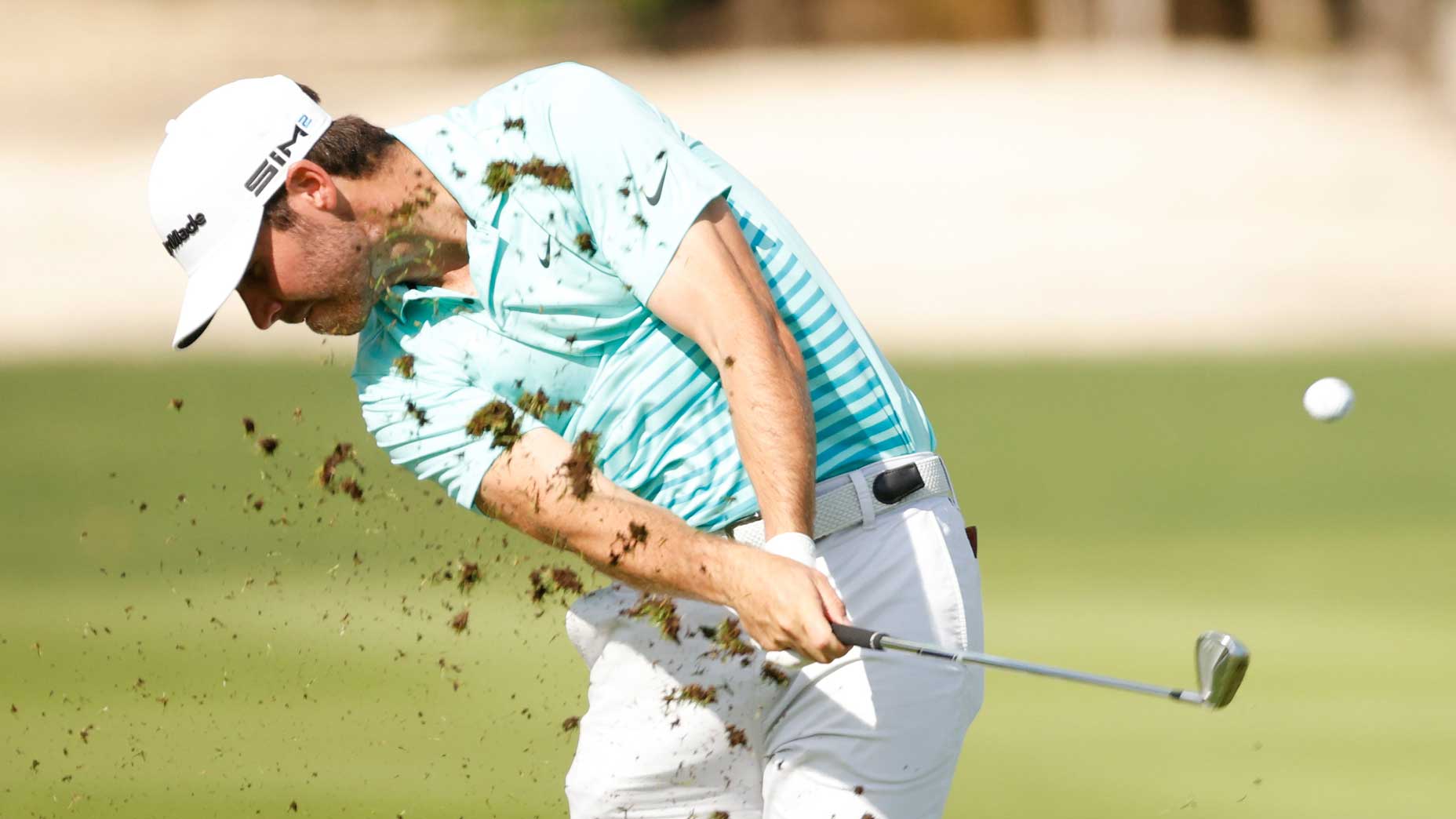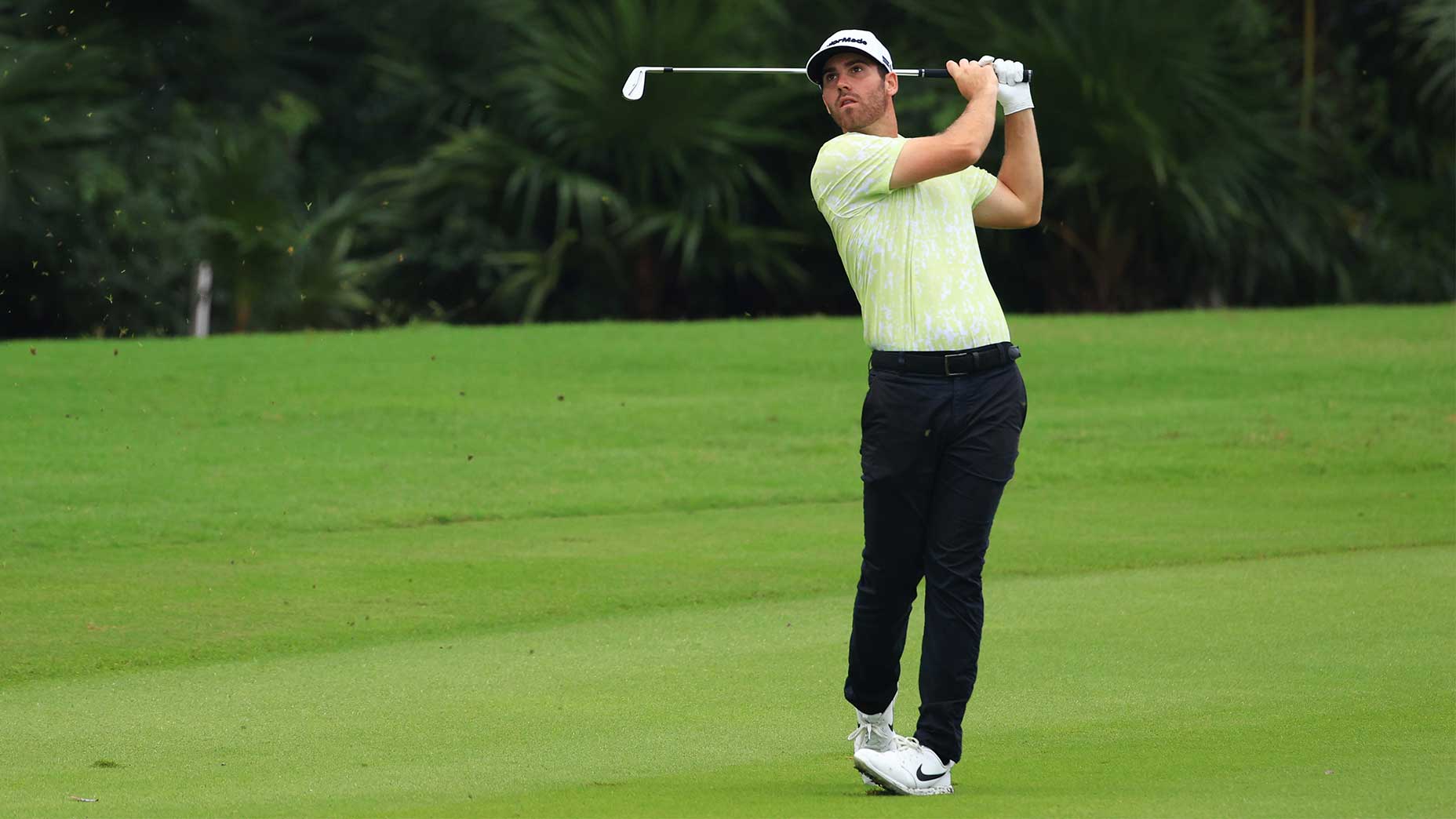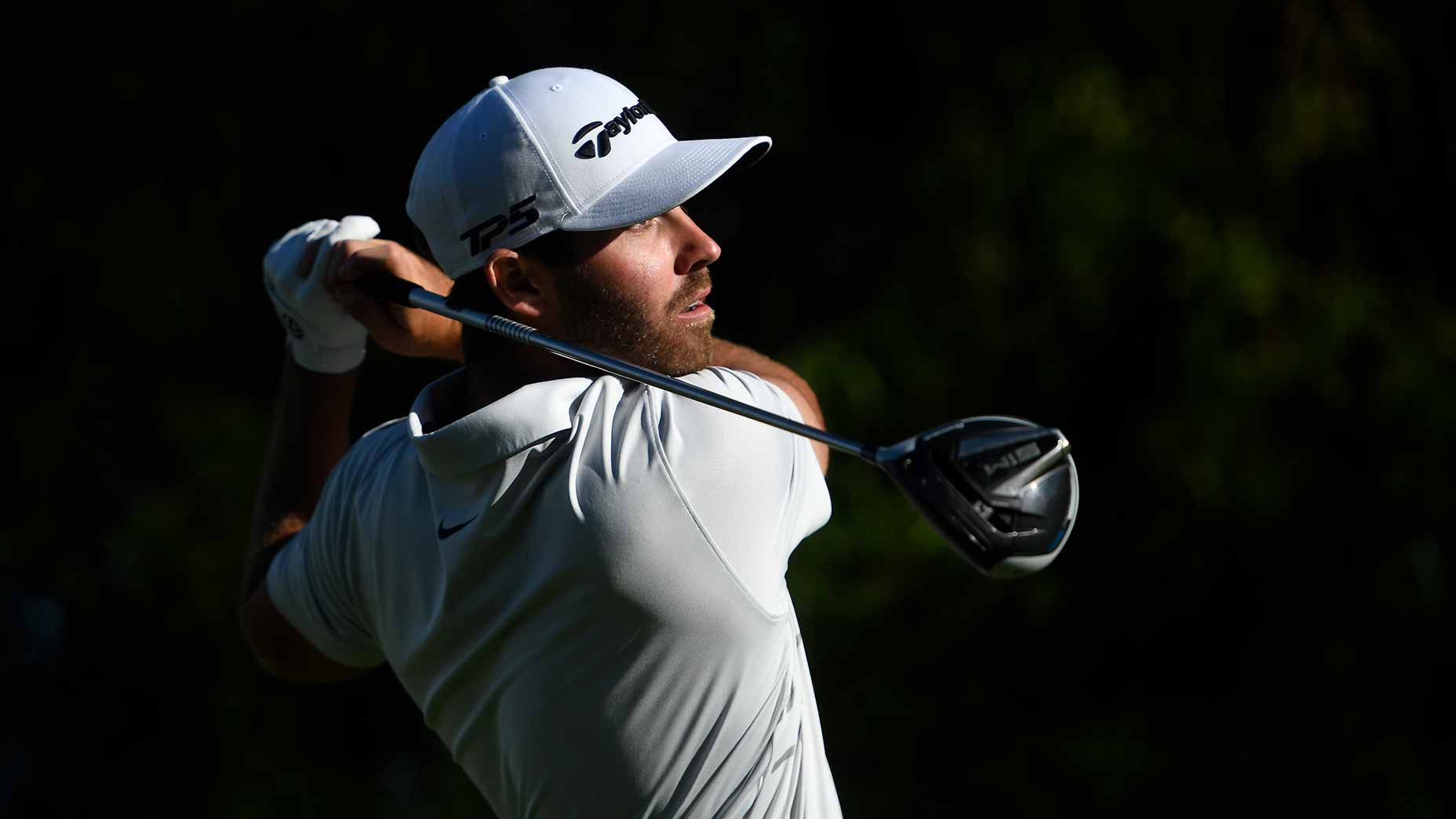George Gankas was giving a lesson in his usual spot at the corner of Westlake Golf Course’s modest range when something caught his eye.
The kid one mat over had a really weird swing.
It was the summer of 2012 and Gankas, an up-and-coming instructor with a diehard Los Angeles–area fan base, was suddenly distracted. He watched one swing, then another, just to make sure he wasn’t seeing things. Then he paused his lesson.
“He turns and goes, ‘Are you for real?’ ” the kid remembers now.
“I’m like, ‘What?’
“He goes, ‘Do you actually swing like that?’
“I’m like, ‘Yeah. That’s my swing.’ ”
Matthew Wolff’s move, even at age 13, would have piqued the interest of any swing coach. But it would have set off some alarm bells, too. He lifted his left heel way off the ground, took the club away way too steeply, pointed it too far to the right at the top and looped it way back inside on the way down. Decidedly irregular. But as Gankas kept glancing over, he noticed that the kid with the weird swing was sending it. He paused his lesson again.
“Dude,” he said. “That is so sick!”
Eight years later, Gankas is still there by Wolff’s side. “The swing” is more or less the same, save for the signature pre-swing, knee-torquing “trigger” the pair added more recently. Most everybody in the golf world knows about it by now. They’re starting to know the player behind it too.
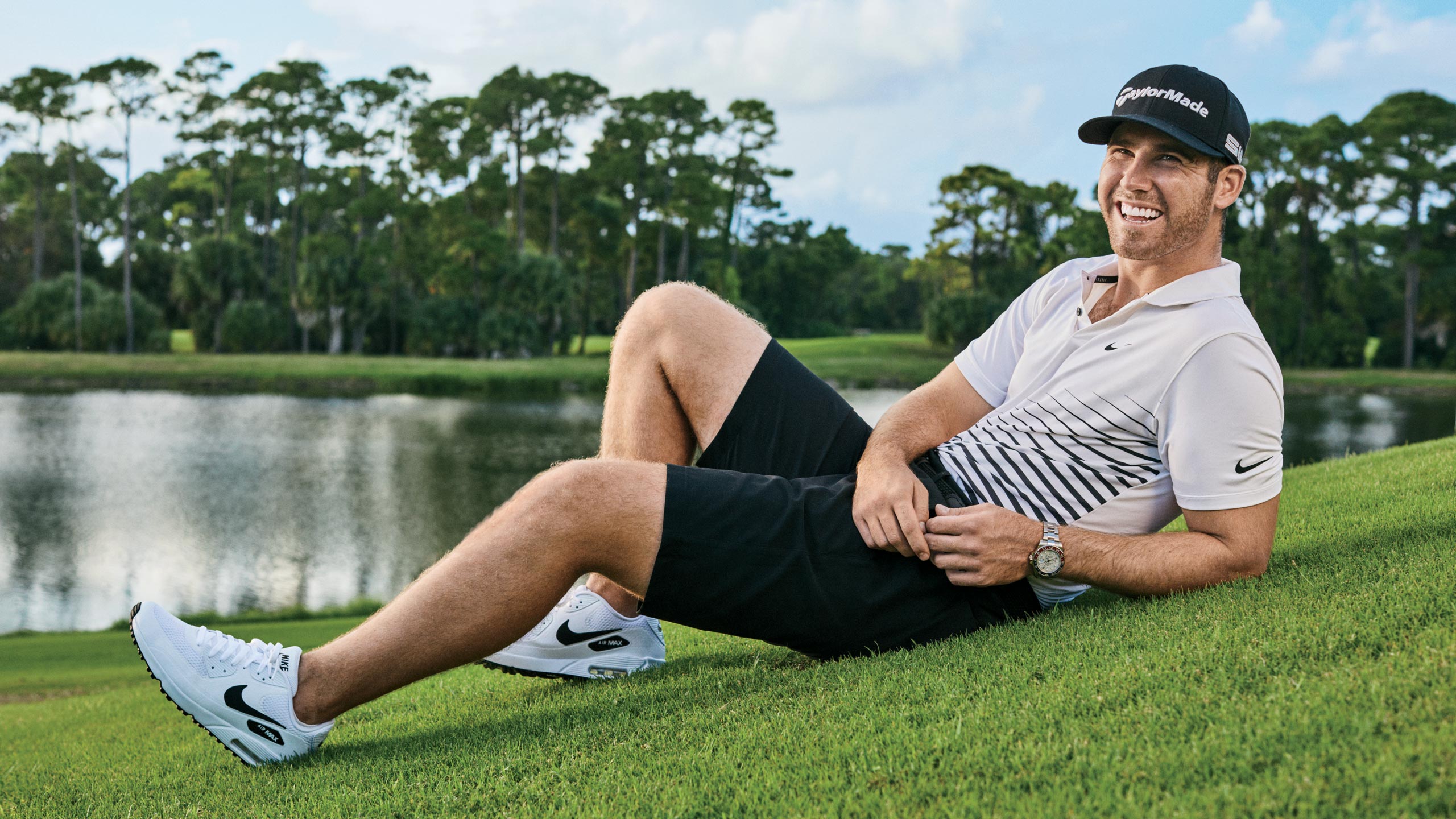
“Hang on a minute,” Wolff says. “I’ve gotta run back inside and grab something.” He’s calling from a car in Stillwater, Okla., where his girlfriend, Kim Lloyd, is finishing up her senior year at Oklahoma State University. This would be Wolff’s senior year there, too, had he stayed in school. It’s mid-November, the week after the 2020 Masters, and he’s crashing with Kim and her three roommates in their apartment. These are the worlds you straddle when you’re both a college dropout and the 14th-ranked golfer in the world.
The pitter-patter of footfalls return from inside the house and Wolff is back on speakerphone, short of breath. When he said he was “running,” he meant it. For a budding superstar, he’s awfully courteous. “Sorry! What up, bro?”
Life is happening all around Wolff. Last week he was at Augusta National. The week before he was in South Florida at a photo shoot for the cover of this magazine. This week, in Oklahoma City, he’s attending the wedding of college teammate Hayden Wood, hence the car errand. He’s off to get a haircut (high draw on the course; high fade in the shop).
In the meantime, he’s supposed to be thinking about furniture for his new houses: one in Edmond, some 40 minutes south of Stillwater, and the other in Jupiter, Fla., professional golf’s international capital. It’s one of the reasons he likes crashing in Kim’s apartment: the simplicity of it all.
“I need a bed, a couch and a TV,” he says with a sigh. “That’s literally all I need.”
Need notwithstanding, soon he’s certain to have much more…of everything. In less than two full seasons on Tour, Wolff has earned nearly $6 million in on-course prize money. He’s fresh off top-five finishes in his first two major starts, a first for any player since 1881. He’s got TaylorMade on his hat and Nike on his shirt and, imminently, Gatorade in his bag. He’s the face of golf’s new wave: dynamic, edgy, athletic, free-swinging. And he’s just 21 years old.
The house in Edmond is close to Oak Tree National, a former PGA Championship host site with a terrific practice facility, where Wolff is a member. Fellow Oklahoma State Cowboy pros play there sometimes, including Kevin Tway, Talor Gooch and Wolff’s college contemporary Viktor Hovland. Oak Tree offers a good deal to young pros, charging a limited initiation fee and no monthly dues. There’s always a game to be had.
The house in Jupiter is close to Medalist Golf Club, a brutish Pete Dye design with a terrific practice facility of its own, where Wolff is also a member. At least one fellow Cowboy plays there: Rickie Fowler. Other pros of note belong too: Dustin Johnson, Justin Thomas, Tiger Woods, Michael Jordan. There’s always a game to be had here, too, and A-listers are everywhere, which might explain Wolff’s pretty simply stated goal: “I want to be the best. I want to be the very best player in the world.”

Wolff didn’t always know he was destined for golf superstardom. For a while, he just knew he was good at sports. He was born in 1999 — yes, 1999 — to Bill and Shari Wolff and grew up in a middle-class household in Agoura Hills, a northern suburb of Los Angeles, where he spent every spare moment running around with his friends, playing baseball, basketball, soccer, anything. From a young age, those friends already knew he was the best, no matter the game, and effortlessly so.
But golf was Wolff’s love. He liked the way he was in control, the way nobody relied on him, so he couldn’t let them down. And he liked the process of working, playing, getting better. He got really good, really fast. Even then, he says, he dreamed of playing on the game’s biggest stage.
“But I was always really realistic with myself,” he says. “I had dreams of being a PGA Tour player, but at the end of the day I know how hard guys work, I know how hard it is—there’s a bunch of people who have a lot of talent who just haven’t made it.”
Before agreeing to work with Gankas, Wolff had one prerequisite: Improve the swing but don’t try to change it. His signature move has its origins on the baseball diamond, and until Wolff saw his swing on film he thought it was straight back and straight through, “just like any other golfer.” It isn’t. But it had three major benefits: It was powerful, natural and very much his own. Gankas was all-in. He soon became an irreplaceable piece of Wolff’s support system.
“I call him ‘Dad’ or ‘Grandpa’ just to give him a hard time about how old he is,” Wolff says, laughing. But there’s something to the joke too. Wolff’s parents split up when he was in eighth grade. His mom has remained a vital part of Team Wolff; his dad, less so. Perhaps that’s why she, too, has always recognized Gankas’ importance, even referring to him as a father figure.
There’s never a convenient time for a divorce, but Wolff, even as a middle-schooler, was able to process things in real time. “It made sense,” he says. “I mean, having someone you don’t want to spend time with, and you’re forced to be around them all the time? That must be miserable.”
He has always been especially good at tackling things he can control. Their split fell just slightly outside that category.
“I completely get why people are sad when their parents split up,” he says. “But my life didn’t change that much. I had the same friends, I went to high school, saw them, it was fine. There are little things that change, though. There’s a bunch of little stuff that isn’t quite the same.”
Gankas admired the way Wolff handled the breakup and admires the way Wolff navigates those relationships today. Between teacher and student, there’s always been a mutual admiration.
“He’s just the best kid you could possibly imagine,” Gankas says. “I love him to death.”
Like any swing coach, Gankas knows the little things. Rotational forces. Impact positions. At a recent tournament, Wolff noticed him reading a book on human anatomy. “He said something about tendons,” Wolff remembers. But Gankas wants his star pupil focused on the big picture. That’s the only way to make it all work.
Sometimes he’ll pause their lessons. “Alright, take a look up,” Gankas says. “What do you see?”
He’ll make Wolff gaze past the far net at the Westlake range.
The trees. The birds. The mountains.
“Did you notice any of that s— before we started?” he’ll ask. “Don’t get so wrapped up in your own mind that you forget where you are.”

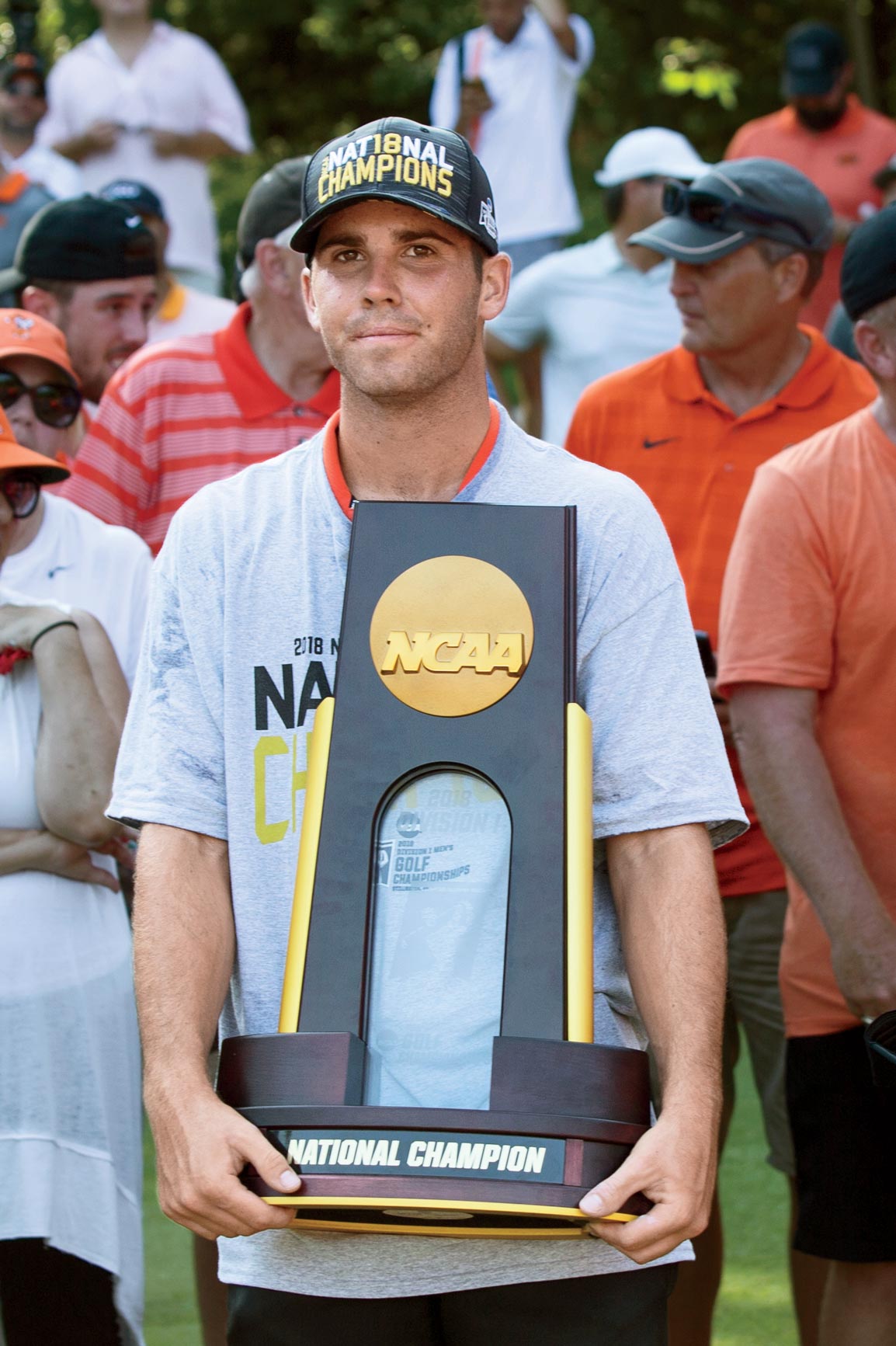
The two most challenging aspects of Wolff’s collegiate career had very little to do with the career itself. First, he decided to step away from a commitment he’d made to nearby USC and embrace an offer from Oklahoma State. Culturally and geographically it was a huge leap, but Wolff had been feeling the itch to expand his horizons. The fact that he was joining the nation’s most storied college golf program was quite the bonus. The next-hardest part? Leaving after just two years. Turning pro was a no-brainer, but still, those two years were a highlight reel.
“What do I miss the most about college?” he asks, weighing in again from his car. “Where do I start?”
Wolff arrived at Oklahoma with relatively measured expectations, he says. “I was like, let’s just see how this goes. Then I played really well my freshman year and I was like, ‘Oh, this might actually be a thing.’ ”
That’s one way of putting it. Wolff quickly established himself as the best first-year—and one of the best, period—college golfers in the country. He capped off his freshman season with a 20-foot birdie putt to clinch the team’s national championship, fist-pumping in front of thousands of spectators clad in orange and black. College was off to a great start.
It wasn’t just golf, though. It was the forced balance of it all. Golf. School. Social life.
“It was just the perfect combination of working hard and, like, busting your a– while still leaving a little bit of room to have fun,” Wolff says. “There was this time built in to see your friends, to hang out, do your thing. But when you were working, you needed to work. Seriously, if I don’t go to Oklahoma State, I’m not sure I ever turn pro.”
Sophomore year, Wolff picked up where he left off. He won his first three events of the fall. In the spring, he planted his flag in OSU history with an individual win at the national championship. Though the 1-seed Cowboys went down in the team semifinals, the entire tournament was meaningful for Wolff. It signaled the end of a pivotal phase of his life—and a bridge to the next one. His mother was there, as was Kim, who he’d recently started dating. Wolff’s individual win doubled as Kim’s tournament-viewing debut.
“I had no idea it would be so exciting,” she says now. “Obviously, that was a pretty good first one for me to see.”
It didn’t take long for Wolff’s love of big moments to translate to the pro ranks. He made his Tour debut at the Travelers Championship in June 2019; just two weeks later he was playing in the final group at the 3M Open. Bryson DeChambeau was in the clubhouse at 20 under. Wolff and playing partner Collin Morikawa came to the 72nd hole, a reachable par 5, each at 19 under. Wolff found the fringe in two, pulled putter and rattled home a 28-footer for eagle and a $1.2 million win, leaving DeChambeau speechless and Morikawa shaking his head in awe.
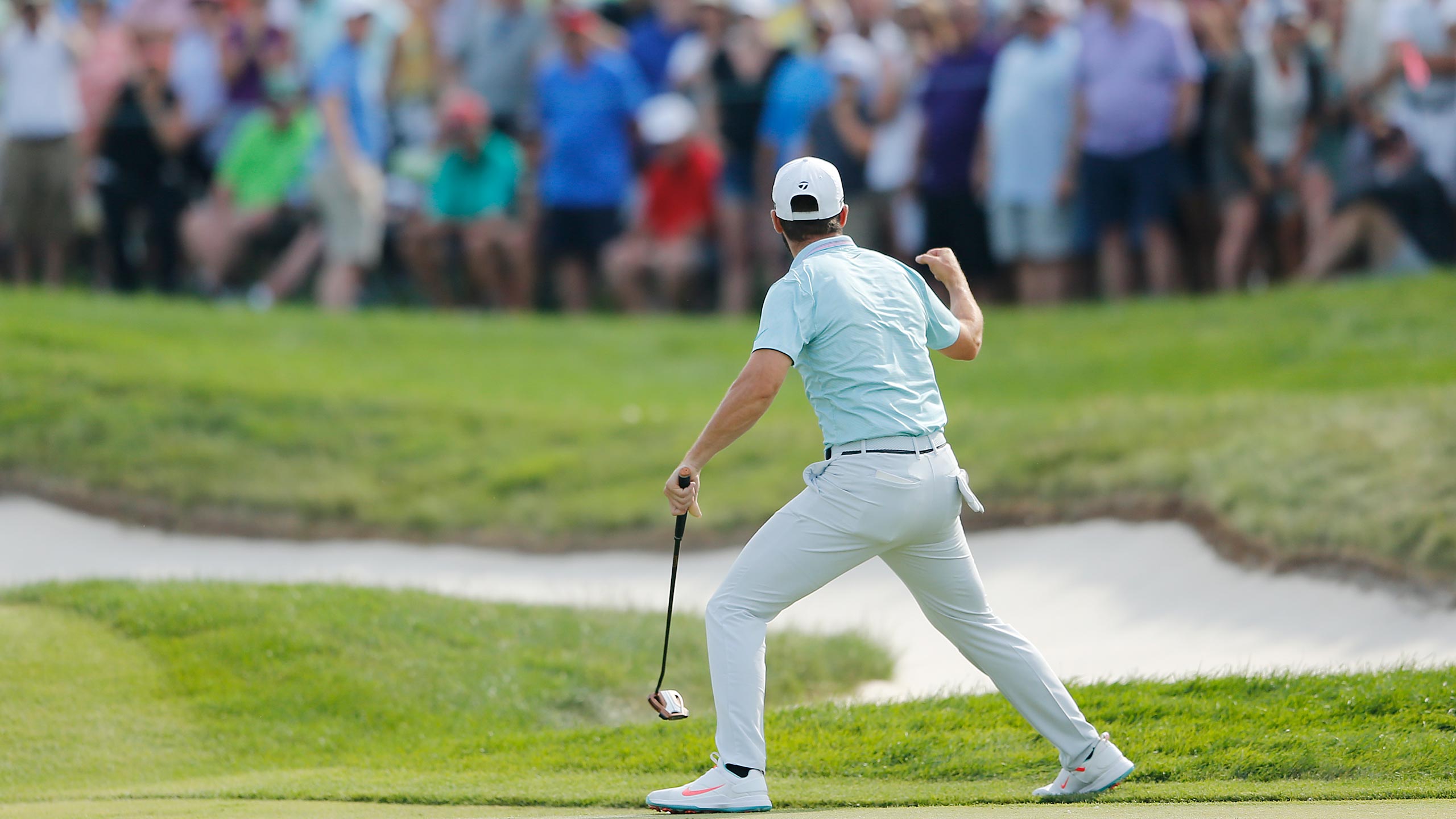
It’s a common refrain on Tour that winning takes care of everything. For Wolff, it took care of plenty: years of Tour status, a house down payment, a temporary sense of belonging. But that’s not everything.
Wolff finished 2019 with some solid if unspectacular play, logging a handful of top 25s and settling into the rhythm of a PGA Tour career in which wins don’t typically come every third week. He was settling into his home in Jupiter, too, where he’d go to prep for tournaments. But the golf-life balance he’d so enjoyed in Stillwater was proving somewhat harder to achieve.
“I go back to Florida to prep for tournaments, and I like the work, I like getting ready, but I don’t really have downtime when I’m there,” he says. “I feel like all I do is practice, and then think about practicing. ‘What can I work on? What can I learn?’ That’s obviously super important, but it’s just as important for me to rest.”
With the help of Rickie Fowler, Wolff got plugged into the network of pros at Medalist and other Palm Beach–area haunts. But there’s still an element of newness and adjustment. Wolff is, let’s remember, a 21-year-old fresh out of college, in a new home state, and without any of his close friends nearby. Add in the complexities of the pandemic and things can get a little isolating.
In his first three starts after the Tour’s Covid hiatus, Wolff finished 54-MC-MC. Every back nine on Friday, the cut line loomed; he was pressing, playing offense and defense at the same time. The spotlight had shifted off of him and onto the Tour’s other young guns. Sungjae Im, Viktor Hovland, Collin Morikawa—each had already picked up a win in 2020 and worked themselves into regular contention. Still, Wolff’s swing felt good. Gankas insisted he was close. Big picture.
At the Rocket Mortgage Classic in July, one year after his first win, Wolff made some subtle changes to his equipment, adding two degrees of loft to his irons and changing shafts, looking for more control. He had a mentality shift, too: Keep it simple and have fun. That’s easier to do once you’re playing well, but still, Wolff insisted that he was going to trust the process.
He opened 69-64. Then he shot another 64 on Saturday to take a three-shot lead into the final round. His swing thought?
“I heard an ice cream truck circling the property and seemed like every time I heard that, I had made birdie or made a putt, so I’ve got to give a lot of credit to that,” he said at the time.
Simple. Fun.
That Sunday, DeChambeau got his revenge from the previous year’s 3M, chasing down Wolff with a 7-under 65. Wolff shot 71 and finished second. He was disappointed not to win, but he was also relieved to see his name so high on the leaderboard.
What followed is the most consistent streak of Wolff’s young pro career. He showed flashes of brilliance at the Memorial, finishing T22. He contended in his title defense at the 3M, finishing T12. Then came an invigorating T4 at the PGA Championship, where Wolff birdied No. 18 to grab Sunday’s clubhouse lead. Even though the lead didn’t hold, it showed moxie. He called it “probably the best ball-striking week of my life.”
And in contention, he felt something promising: a deep sense of calm.
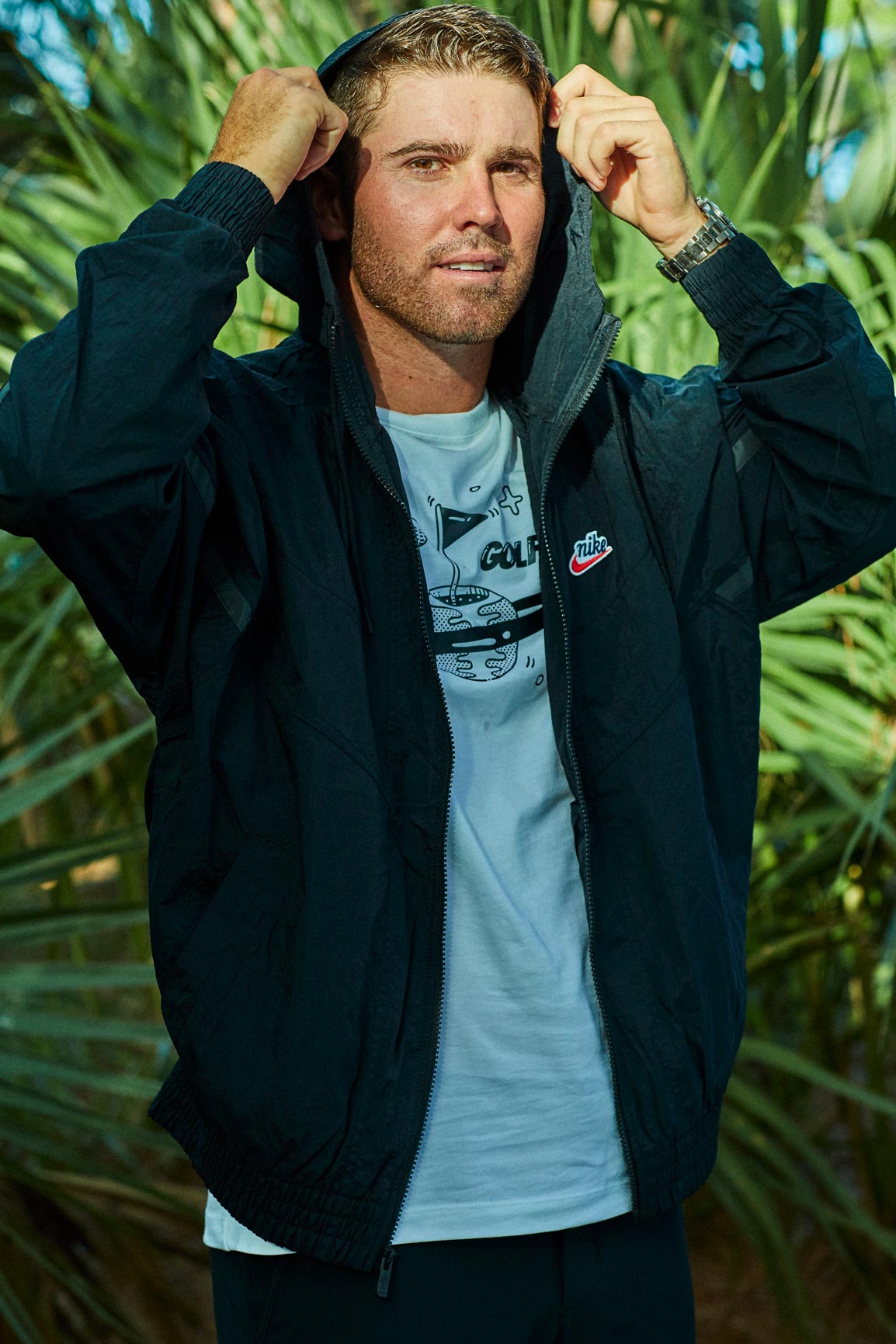
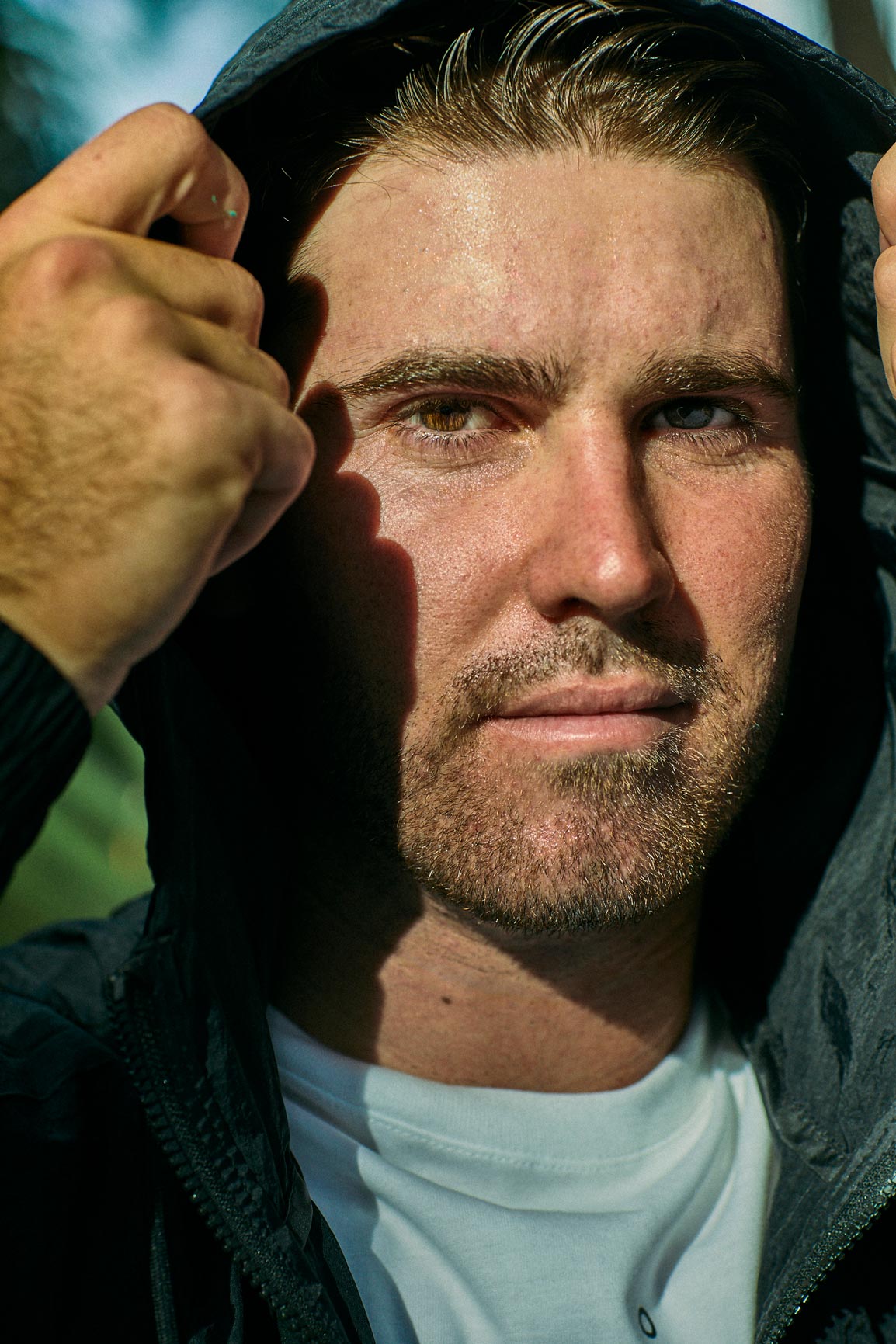
A month later, he played even better on an even bigger stage. Winged Foot seems like an intimidating host site for a player’s first U.S. Open, but Wolff opened with 66, survived a Friday 74 and posted a third-round 65 that was the lowest of the day by two shots. In just his second major, Wolff held a two-shot lead at the 54-hole mark.
“It’s crazy, I really think I could have won the U.S. Open,” Wolff muses now, still a bit in disbelief.
Sunday was all DeChambeau, who played, arguably, the round of the year. But Wolff’s second-place showing was more than a footnote. Pros raved about the newest addition to the world top 20.
“He hits it really far, he hits it really high, he’s not afraid and, yeah, he doesn’t really care,” Xander Schauffele said at tournament’s end.
Rory McIlroy agreed: “Everyone knows how talented Matt is, and he played great at Harding Park in the last major. You know, he’s explosive like that. He can get on runs.”
He’d earned DeChambeau’s respect, too: “He’s definitely got the firepower and the strength to do anything. You’ve got to be looking out for him in the future.”
Wolff nearly won his next start, too, losing the Shriners in a three-way playoff. That finish elevated him to No. 12 in the world, ahead of Im, ahead of Hovland, ahead of Tiger Woods.
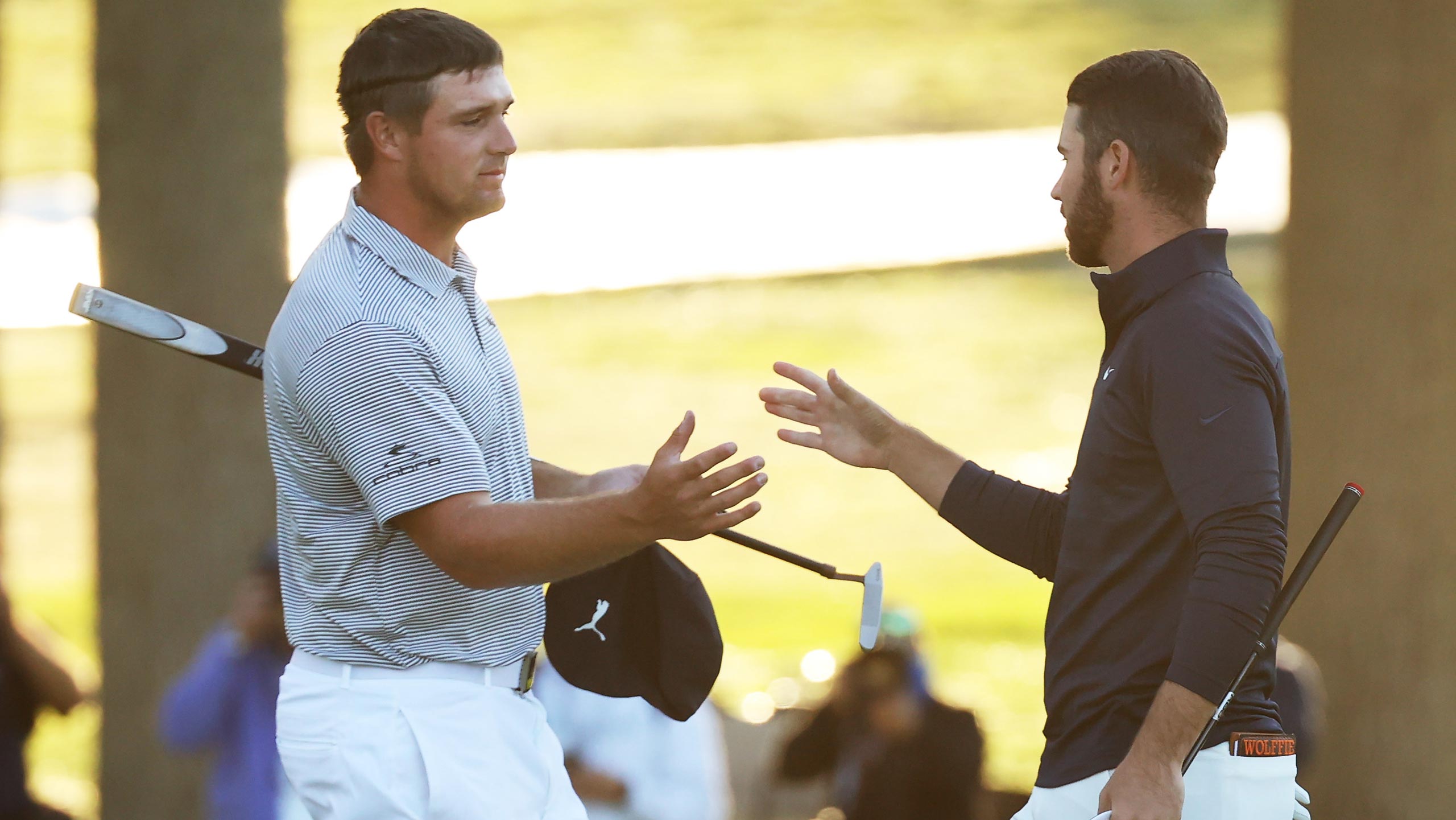
If Wolff’s first two majors announced his sky-high potential, his third reminded us of his youth. Wolff came into the fall Masters as a trendy pick to win; he bombs a high draw and had clearly shown a taste for the big stage. Gankas flew in for the week. Kim was Wolff’s on-property guest. They’d never been to Augusta National, and it was spectacular. It was also strange.
“It was unbelievable, but it’s a little tougher getting comfortable,” Wolff says. “It’s almost like you’re more scared to get in trouble.”
Starting on the back nine Thursday afternoon, Wolff looked plenty comfortable. He birdied 12. Birdied 13. Birdied 15. He got to 4 under before the opening round was called for darkness.
The next morning, something was amiss. “I pile all these expectations on myself sometimes,” he admits. “If I know it’s the Masters and I really want to play well, it can be harder. It wasn’t that I was, like, physically nervous standing over shots. It was just a tiny feeling: I need to play well.”
At Augusta, barely missing certain slopes can turn birdie looks into difficult lag putts. He made two bogeys to finish out his first round. He bogeyed No. 1 to start the second round. He birdied No. 2. He bogeyed No. 3. Steam started rising when he lipped out a par putt at 6, missed a short birdie try at 7 and horseshoed his five-foot birdie try at 8.
There’s no quit in Wolff, but there is plenty of fire. Within a few hours he’d gone from the first page of the leaderboard to the edge of the cut line, and Augusta National was getting to him. After making bogey at 11, Wolff trudged to the 12th tee, where he collapsed on the bench, head down, hat in hand. Gankas, leaning against a nearby tree, could only laugh.
“Look at this kid,” he said. “He’s playing Augusta f—— National and the most famous hole in the world. He might make the cut at the Masters. And he looks absolutely miserable.”
Big picture. That’s the last step for Wolff.
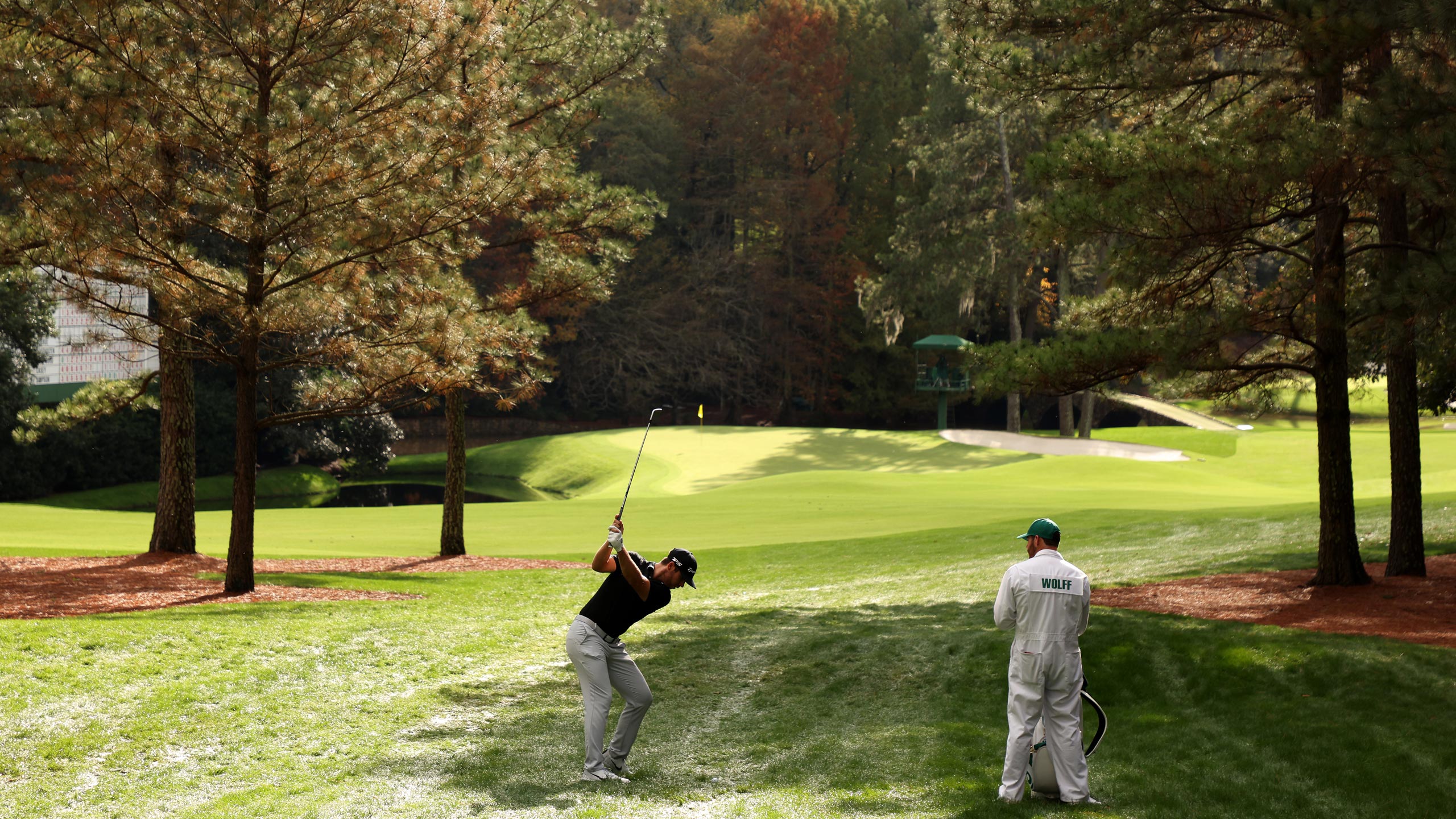
“You see him just being so hard on himself out there,” Gankas says. “And then it all makes sense when you remember that he should still be playing college golf tournaments. He’d still be playing college tournaments, but he’s too damn good.”
Wolff, almost to his haircut appointment, acknowledges just how hard he can be on himself.
“You can see my emotions more than you can with other guys,” he says.
There was a little letdown after his eventual missed cut at Augusta, but in mid-November 2020 Wolff was looking forward to a mini-off-season, too. He’d still be busy with things like the annual TaylorMade marketing photo shoot, with the likes of Dustin Johnson, Tiger Woods and Rory McIlroy—a reminder of the block on which Wolff now resides. Gatorade called, too. They want Wolff to be the first golfer since Woods to rep their sports drink. The brands see what the rest of the golf world does: a new-age superstar who plays his own way.
Wolff admits he’s starting to understand his own power. He knows what it’s like to be a kid on a range with a golf hero.
“When I don’t get pissed, yeah, I guess I can inspire,” he says, laughing. “I talk a lot, I’m pretty loud, my swing is obviously different. I do some things my own way. People seem to like that, I guess.”
People don’t just like it. They love it. They gravitate to it. Wolff is so much more than his swing, but he is his swing too: powerful, unapologetically himself, on his own path to maximum impact.

